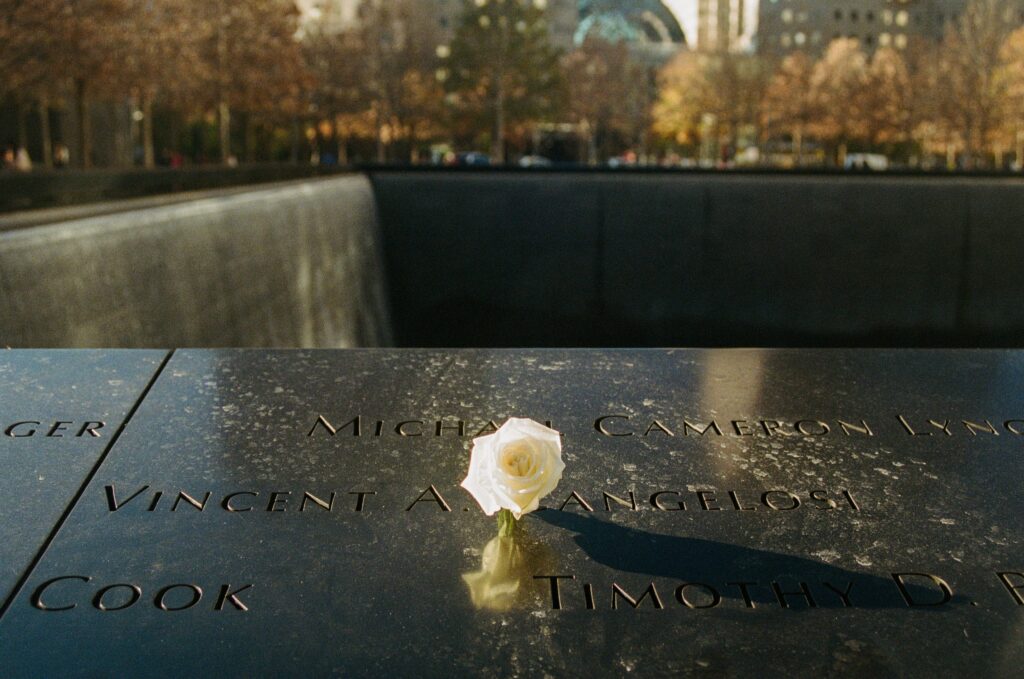
When it comes to planning for end-of-life arrangements, one of the most significant decisions to make is whether to opt for cremation or burial. This choice is deeply personal and can be influenced by various factors such as religious beliefs, family traditions, and personal preferences. Moreover, cost considerations play a crucial role, as there can be a substantial difference between the expenses involved in cremation and burial. In this comprehensive guide, we will explore the process, cost, and pros and cons of cremation and burial, empowering you to make an informed decision for yourself or your loved ones.
Cremation: Honoring a Life Through Transformation
Cremation is a method of body disposition that involves exposing the deceased to high heat, reducing the body to bone fragments commonly referred to as “ashes”. The cremation process typically takes around four hours, during which the body is placed in a specialized furnace-like chamber. Afterward, the bone fragments are carefully processed and transferred into an urn, allowing the bereaved to memorialize and preserve the remains.
The Cremation Process: What to Expect
Before proceeding with cremation, certain legal requirements and preparations must be completed. Funeral directors, in accordance with state regulations, ensure that the necessary authorization forms and permits are obtained. Once these formalities are settled, the cremation process can commence.
During the cremation itself, the body is placed in a cremation chamber where temperatures can reach between 1,400 and 1,800 degrees Fahrenheit. This intense heat reduces the body to bone fragments, which are then cooled and carefully collected. The remains, weighing between 3-9 pounds and typically appearing white in color, are placed in an urn or container chosen by the family.
Options for Final Resting Place
After cremation, families have several options for the final resting place of their loved one’s ashes. These choices can include:
- Indoor or Outdoor Mausoleum: Placing the urn in a mausoleum provides a dedicated space for remembrance and visitation.
- Burial in a Family Plot or Cemetery Urn Garden: Families may choose to bury the urn in a family burial plot or a designated area within a cemetery.
- Scattering the Ashes: Some individuals express their wishes to have their ashes scattered in a meaningful location, such as a favorite spot or a place of significance.
- Keeping the Urn at Home: Families can choose to keep the urn in their home, allowing them to have their loved one close by.
Pros and Cons of Cremation
Cremation offers several advantages and disadvantages that should be considered when making a decision:
Pros:
- Affordability: Cremation is often more cost-effective than traditional burial, as it eliminates the need for a casket, burial plot, and related expenses.
- Versatility: The ashes can be kept in an urn, divided among family members, or used to create memorial items, providing flexibility in honoring and memorializing the departed.
- Mobility: Ashes can be easily transported, allowing loved ones to bring them along when relocating or traveling.
- Environmental Considerations: Cremation is generally viewed as a more environmentally friendly option, as it requires less land and avoids the use of embalming chemicals.
Cons:
- Religious and Cultural Factors: Some religious beliefs and cultural traditions may discourage or prohibit cremation, making it important to consider individual faith and customs.
- Emotional Impact: The cremation process itself may be emotionally challenging for some family members, as it involves the transformation of the body through fire.
Burial: Honoring Tradition and Finding Solace in a Final Resting Place
Burial is a time-honored method of body disposition that involves interring the deceased in a grave. This traditional approach to end-of-life arrangements provides a physical space for remembrance and allows loved ones to visit and pay their respects.
The Burial Process: A Reverent Farewell
The burial process begins with the preparation of the deceased’s body, including bathing and disinfection. If desired, embalming can be performed to preserve the body for viewing purposes. The body is then placed in a casket, which serves as the vessel for the burial.
Before the burial takes place, a funeral service may be conducted, providing an opportunity for family and friends to gather, share memories, and pay their final respects. Pallbearers, typically close family members or friends, carry the casket to the gravesite, where it is lowered into the ground. A graveside service may be held, during which final prayers or words of remembrance are offered.
Options for Burial
Burial offers various options for the final resting place of the deceased. These include:
- Traditional Cemetery Burial: The deceased is interred in a designated burial plot within a cemetery. This option allows for the placement of a headstone or grave marker, providing a lasting memorial.
- Natural or Green Burial: Increasingly popular, natural burial involves interring the body in a biodegradable casket or shroud, allowing for a more eco-friendly approach to burial. This option promotes the return of the body to the earth in a natural and sustainable manner.
- Family or Private Burial Grounds: Some families choose to have a private burial ground on their property, allowing for a more intimate and personal setting for the final resting place.
Pros and Cons of Burial
Burial, like cremation, has its own set of advantages and disadvantages to consider:
Pros:
- Physical Memorial: Burial provides a designated space for remembrance, allowing loved ones to visit and pay their respects.
- Traditional and Cultural Significance: Burial aligns with many religious and cultural traditions, providing a sense of continuity and honoring ancestral practices.
- Closure and Mourning Process: The physical presence of a gravesite can aid in the grieving process, providing a tangible space for reflection and connection.
- Familiarity and Comfort: Burial is a well-established practice that many individuals find familiar and comforting, as it has been a common method of body disposition throughout history.
Cons:
- Higher Costs: Burial expenses can be significantly higher than cremation, as they involve the purchase of a casket, burial plot, headstone, and other related fees.
- Limited Flexibility: Once buried, the body cannot be easily moved or relocated, limiting options for future changes or adjustments.
- Land Usage and Environmental Impact: Traditional burial practices require dedicated land, which can contribute to the strain on existing cemetery space and raise concerns about environmental sustainability.
Comparing the Costs: Cremation vs. Burial
When considering cremation or burial, cost is often a significant factor. It’s essential to evaluate the expenses associated with each option to make an informed decision.
Cost of Cremation
Cremation is generally more affordable than traditional burial. The cost of cremation can vary depending on factors such as location, service options, and additional expenses. On average, a cremation with a memorial service can be organized for as little as $2,000. However, costs can range from $1,000 to $3,000 for basic cremation services, and may increase to $6,000 to $8,000 when additional options are chosen.
Cost of Burial
Traditional burial costs can be higher due to the various expenses involved. On average, an American burial with a service can cost around $6,000. This cost includes fees for a basic service, transportation of the body, preparation, embalming, the use of facilities for viewing and funeral, a casket, a hearse, and memorial print packages. Additional expenses such as a grave plot, burial vault, and headstone can further increase the overall cost.
It’s important to remember that these cost estimates can vary based on location, funeral home, and individual preferences. Researching local prices and discussing options with funeral service providers can provide a clearer understanding of the expenses involved in both cremation and burial.
Religious Beliefs and Cultural Considerations
Religious and cultural beliefs can significantly influence the preference for cremation or burial. Different faiths have distinct views on body disposition, and it’s crucial to respect and consider these perspectives.
A Sample of Some Religions:
Catholicism
Catholicism traditionally favored burial, but the Church has permitted cremation since 1963. While burials are still preferred, cremation with a funeral service is now accepted and encouraged. The Catholic Church emphasizes the importance of treating the deceased with reverence and respect, regardless of the chosen method of body disposition.
Protestantism
Protestant denominations generally allow for both cremation and burial. Individual beliefs and preferences within Protestantism can vary, and it is advisable to consult with church leaders or clergy for guidance.
Judaism
Judaism traditionally mandates burial as the preferred method of body disposition. Jewish law emphasizes the sanctity of the body and the importance of returning it to the earth. While cremation is generally discouraged in Judaism, there are exceptions in cases where the deceased expressed a clear preference for cremation or if it is required by state law.
Islam
Islam strictly prohibits cremation, considering it against religious teachings. Islamic tradition mandates burial as the only acceptable method of body disposition. It is essential for Muslims to consult with their local imam or Islamic authority to ensure adherence to religious guidelines.
Hinduism
Hinduism has a long-standing tradition of cremation. Hindu beliefs emphasize the cycle of life and death, with cremation seen as a means of releasing the soul from the physical body, allowing it to continue its journey. Cremation is widely practiced in Hindu communities, although there may be variations based on regional customs.
Buddhism
Buddhism does not have specific regulations regarding cremation or burial. The choice between the two methods is often left to personal preference or cultural practices. Some Buddhists prefer cremation, while others may opt for burial based on their individual beliefs and traditions.
It is essential to consult with religious leaders, clergy, or cultural authorities to ensure that the chosen method aligns with individual or family beliefs and practices.
Environmental Considerations: Sustaining the Earth in Death
As environmental consciousness grows, individuals are increasingly considering the ecological impact of their choices, even in end-of-life arrangements. Both cremation and burial have environmental considerations to take into account.
Cremation and the Environment
Cremation is generally viewed as a more environmentally friendly option compared to traditional burial. It requires less land usage and avoids the use of embalming chemicals, which can have adverse effects on the environment. However, the cremation process itself does release carbon dioxide and other emissions, contributing to air pollution.
Burial and the Environment
Traditional burial practices can have significant environmental impacts. Burial requires dedicated land for cemeteries, which can contribute to urban sprawl and the loss of natural habitats. Additionally, embalming fluids and materials used in casket construction can potentially contaminate soil and groundwater.
Eco-Friendly Alternatives
For individuals seeking more sustainable options, there are alternative methods available. Natural or green burials, for instance, promote a more environmentally conscious approach by using biodegradable materials and avoiding embalming chemicals. These burials allow the body to decompose naturally, returning to the earth and supporting ecosystem health.
Making Your Decision: Factors to Consider
Choosing between cremation and burial is a deeply personal decision, influenced by various factors. To make an informed choice, consider the following:
- Personal Preferences: Reflect on your own beliefs, values, and preferences for body disposition. Consider what would bring you and your loved ones the most comfort and solace.
- Religious and Cultural Considerations: Take into account any religious or cultural guidelines that may influence your decision. Consult with religious leaders, clergy, or cultural authorities for guidance.
- Financial Considerations: Evaluate the cost implications of cremation and burial. Consider your budget and any financial constraints that may impact your decision.
- Environmental Consciousness: If sustainability is a priority for you, explore eco-friendly options such as green burials or cremation with carbon offset programs.
- Family and Emotional Needs: Consider the emotional and psychological impact of your decision on your loved ones. Reflect on their preferences and the importance of having a physical space for remembrance and visitation.
Ultimately, your decision should align with your values, beliefs, and personal circumstances. It is essential to have open and honest conversations with your loved ones, ensuring that everyone understands and respects your wishes.
Conclusion
Choosing between cremation and burial is a significant decision that requires careful consideration. By understanding the processes, costs, and factors involved, you can make an informed choice that aligns with your values, beliefs, and personal circumstances. Whether you opt for the transformative nature of cremation or the traditional solace of burial, remember that this decision is deeply personal and should bring comfort and peace to you and your loved ones.










